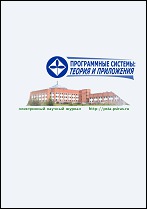|
Artificial intelligence and machine learning
Gesture control of small unmanned aerial vehicle flight
N. S. Abramova, V. V. Sattarovab, V. P. Fralenkoa, M. V. Khachumovcdea
a Ailamazyan Program Systems Institute of RAS, Ves’kovo, Russia
b RUDN University, Moscow, Russia
c Federal Research Center "Computer Science and Control" of RAS, Moscow, Russia
d MIREA - Russian Technological University, Moscow, Russia
e Russian State University for the Humanities, Moscow, Russia
Abstract:
The problem of constructing gesture commands for controlling
a small unmanned aerial vehicle, such as a quadcopter, is considered. Commands
coming from a video camera are identified by a classifier based on a convolutional
neural network, and the multimodal control interface equipped with an intelligent
solver converts them into control commands for the quadcopter. Neural networks
from the Ultralytics neural network library allow selecting targets in a frame
in real-time. The commands are sent to a specialized program on a smartphone,
developed on the basis of DJI SDK flight simulators, which then sends commands
via the remote control channel.
The quality of recognition of developed gesture commands for DJI Phantom 3
standard edition quadcopters is investigated, and a brief guide in the form
of operator work scenarios with unmanned vehicles is provided. The prospects
of gesture control of several vehicles in extreme conditions have been revealed,
considering the complex safety challenges of joint flight and interaction of aircraft
in confined space.
Key words and phrases:
unmanned aerial vehicle, control, gestures, convolutional neural network, Ultralytics, intelligent interface, recognition.
Received: 09.02.2024
Accepted: 17.03.2024
Citation:
N. S. Abramov, V. V. Sattarova, V. P. Fralenko, M. V. Khachumov, “Gesture control of small unmanned aerial vehicle flight”, Program Systems: Theory and Applications, 15:2 (2024), 21–36
Linking options:
https://www.mathnet.ru/eng/ps441 https://www.mathnet.ru/eng/ps/v15/i2/p21
|

| Statistics & downloads: |
| Abstract page: | 118 | | Full-text PDF : | 54 | | References: | 26 |
|



 Contact us:
Contact us: Terms of Use
Terms of Use
 Registration to the website
Registration to the website Logotypes
Logotypes